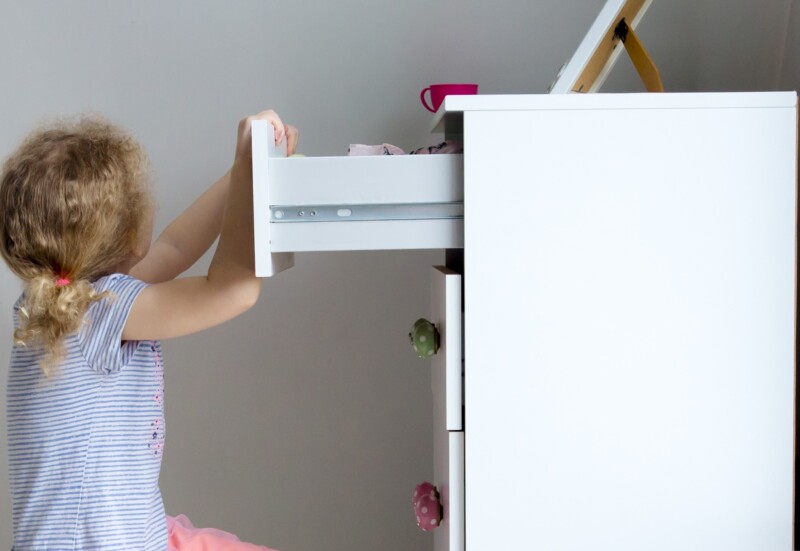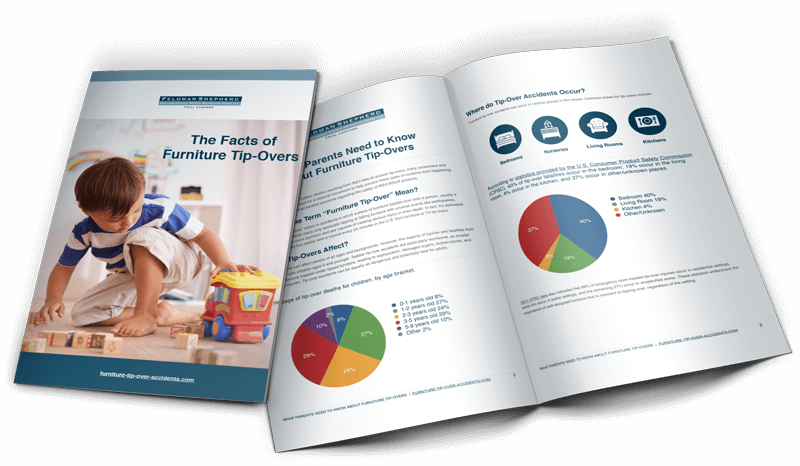As the clock ticks down on the final days of the 116th Congress, legislation that would help prevent dresser tip-overs must pass the Senate within the next three months if we are to finally have a law that keeps children safe in their own bedrooms.
The STURDY Act (Stop Tip-Overs of Unstable, Risky Dressers on Youth Act) would require the Consumer Product Safety Commission (CPSC) to create a mandatory federal safety standard for dressers sold in the United States. The legislation passed the House with bipartisan support in September 2019, but unfortunately is stalled in the Senate. It is the second attempt by lawmakers in recent years to strengthen the safety standard. A similar bill introduced in 2016 did not receive a vote. Previously, the Katie Elise and Meghan Agnes Act ― a furniture safety bill named for two children who died from dresser tip-overs ― was introduced in Congress in 2005 and reintroduced in 2007, but failed to progress both times. It has been nearly 15 years since 3-year-old Meghan, whom the act was named after, suffocated under her dresser while the rest of her family, including her twin brother, slept. In the intervening years, many other toddlers have been killed unnecessarily because of this legislative delay, as manufacturers failed to voluntarily implement more stringent testing and design requirements.
Today, with their end goal the closest it has ever been, child safety advocates ― including several former Feldman Shepherd clients whose children died from IKEA dresser tip-overs ― are gearing up for an intense battle to the finish line as senators have turned their attention to the Supreme Court seat left vacant by the death of Ruth Bader Ginsburg and the public health and economic crises created by the COVID-19 pandemic.
Are Dresser Tip-Overs ‘Freak’ Accidents?
Furniture tip-overs, including dresser tip-overs, are not “freak” accidents, but rather the predictable outcome of poorly designed furniture that is not safe and secure for all intended and foreseeable uses. Unfortunately, these accidents are more common than most people realize.
Between 2000 and 2018, tip-overs of furniture, televisions and appliances caused 556 deaths, according to the CPSC. Of these tip-over deaths, 83 percent (459 deaths) involved children. Of the 459 deaths, 67 percent (309 deaths) involved children between ages 1 and 3 ½ years. Moreover, the CDC estimates that furniture, television and appliance tip-overs caused an annual average of 27,100 emergency department (ED)-treated injuries between 2016 and 2018. Of the ED-treated injuries, an estimated annual average of 3,200 involved children who were injured by chests, bureaus and dressers that tipped over.
Unstable dressers are particularly risky for curious toddlers, as starting at about age 2 they may open multiple dresser drawers or attempt to climb or sit in a drawer. Unfortunately, young children do not have the strength to prevent a dresser from falling or to lift a dresser that has tipped over onto them. Making an already dangerous situation worse, tip-over accidents often occur when parents think their child is safely asleep in bed, and parents may not hear the dresser fall because the child’s body and carpet often cushions the impact. And for every tip-over that causes injury, there are hundreds of “near misses” where a toddler manages to get out of the way, or a nearby adult catches the dresser, or it falls onto a bed or other nearby object.
While manufacturers (and some members of the public) argue that tip-overs could easily be prevented if consumers would simply anchor their furniture to a wall, this argument ignores real-world considerations. For instances, many people do not own or know how to use power tools and are not comfortable with drilling holes into their walls and furniture. Also, many families are not permitted to make holes in the walls of rented apartments, or they may have baseboard heating which prevents a dresser from being positioned flush against the wall.
A Consumer Reports investigation in 2018 found that only 27 percent of Americans have anchored furniture in their homes. And even if that number were to increase, anchoring is not a substitute for high-quality, safe design of dressers that are stable and tip-resistant. The point is best illustrated by a an incident recently captured on video by a baby monitor in which an IKEA bookcase that was supposedly anchored to a wall violently fell on top of 2-year-old twins. According to news reports, one anchor was pulled out of the wall, but remained attached to the bookcase. The other anchor stayed in the stud of the wall, but broke off from the bookcase.
Why Is a Mandatory Federal Safety Standard for Dresser Stability Needed?
Contrary to popular belief, there is no government agency that safety-tests furniture before it is brought to market in the United States. Stated bluntly: the stability of the dresser in your child’s bedroom is governed by nothing more than a voluntary safety standard created primarily by the furniture industry itself.
While it is possible that furniture makers might independently conclude that unstable dressers are a danger to children and toughen the voluntary standard or introduce new, safer designs on their own, experience suggests otherwise. For years, parents who have lost children to dresser tip-overs (including former Feldman Shepherd clients) have tried to work with furniture manufacturers to improve safety. While some progress has been made, these courageous parents have mainly encountered a brick wall of resistance.
Passage of the STURDY Act would at last take children’s safety out of the hands of self-interested, profit-motivated furniture manufacturers. Safety would be mandatory, not voluntary, and the standard would be created by the CPSC, whose charge is to reduce the risk of injuries and deaths from consumer products.
How Can I Help Get the STURDY Act Passed?
We encourage you to contact your senators and let them know that you support immediate passage of the STURDY Act. With children’s lives at stake, we simply cannot afford to let the STURDY Act die in the Senate, which would perpetuate a cruel cycle where parents seeking to spare other families from tragedies similar to their own must once again start over with lawmakers in 2021. For a list of U.S. senators’ contact information, CLICK HERE.
Additionally, there are many child-safety organizations that support passage of the STURDY Act, including Parents Against Tip-Overs, Shane’s Foundation and Kids in Danger. To get involved, you can contact these organizations directly.
For op-eds in which Crystal Ellis (a former Feldman Shepherd client) and Kimberly Amato, who are founding members of Parents Against Tip-Overs, share their personal tragedies and speak out in support of the STURDY Act CLICK HERE and CLICK HERE.


